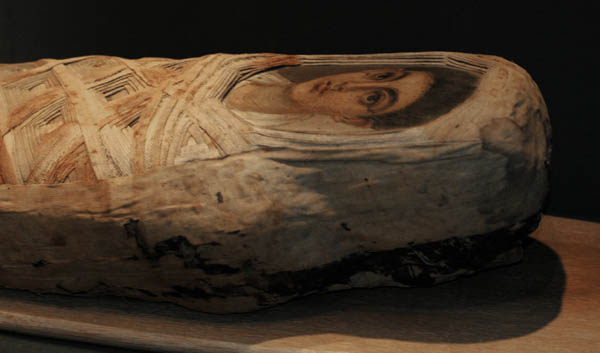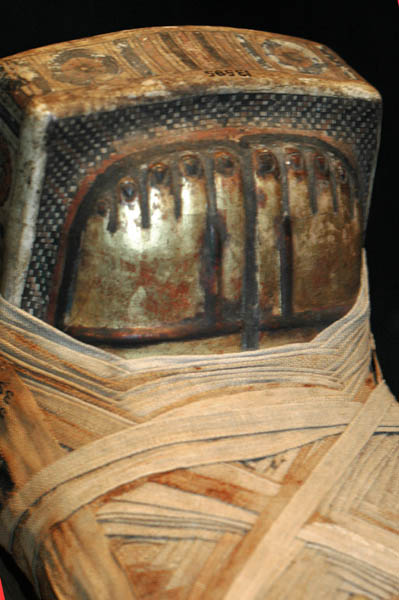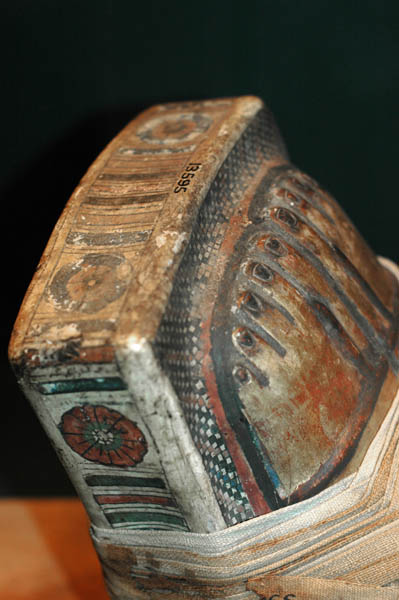
- Mummy of a young boy with a portrait panel from Hawara. Roman Period.
The outermost wrappings wound around this mummy of a young boy are very carefully arranged to form diamond patterns. Like many mummies in the Roman period. There are small studs of gilded stucco (plaster) in the centre of these patterns. A wooden panel, known as a 'mummy portrait'. has been inserted on top of the mummy's head. Melted wax has been painted onto the panel with a brush in what is known as 'encaustic' technique.
The boy wears a white mantle positioned high up around his neck. The purple stripe on his tunic is known as a 'clavus' Purple was a special colour signifying high status in ancient Rome. A painted cartonnage casing protects the boy's feet Cartonnage is made of alternate layers of plaster and gum-soaked linen shaped over a mould made of wood. stone or mud and straw that usually covers the mummified body. The cartonnage formed the first of a number of coffins.
Hancock Museum, Newcastle.




